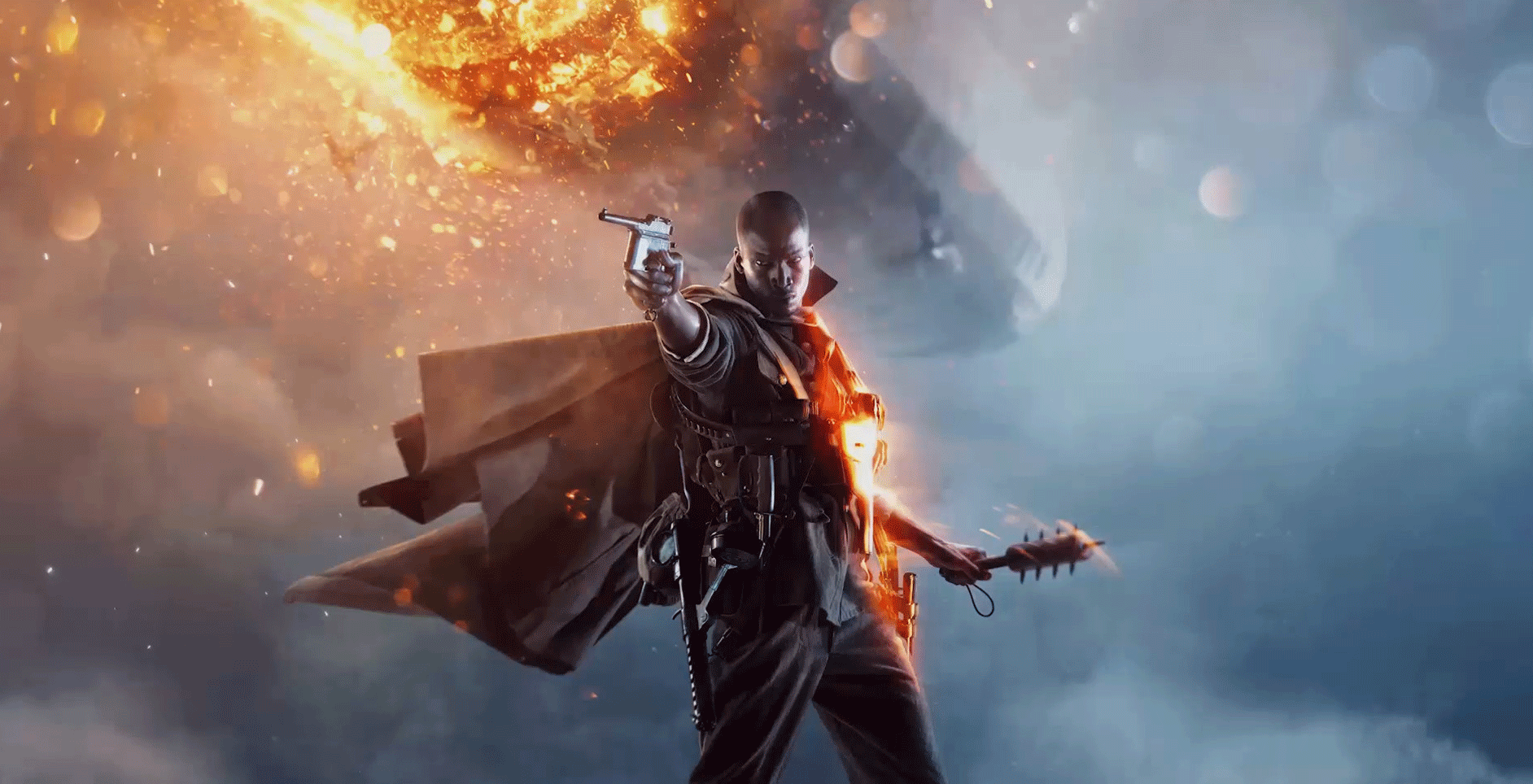The first-person shooter space has seen a few thematic shifts in the past few years. Moving from the second World War to modern warfare, with the eventual shift to a whole array of sci-fi shooters, the market has found itself in a stand-still point, where it desperately needs new, though a-little-bit-familiar ideas. Stepping away from years of modern combat, Battlefield 1 marks DICE’s shift towards this idea of changing up the market. Welcome to World War I.
The Battlefield franchise has never quite been known for its single-player experiences. Often resulting in non-essential cannon fodder, and campaigns which weren’t exactly filled with any substance for the player to cling onto, with the possible exception of Bad Company, which even then relied heavily on its dialogue and character interactions. Battlefield 1 changes up the formula in this regard, exchanging the larger over-arching storyline for shorter and separate ‘War Stories’. These focus on scenarios which are basically tutorials, getting players ready to enter the multiplayer arena. However, this criticism can be seen as a bit of a double-edged sword.
Battlefield 1 changes up the formula in this regard, exchanging the larger over-arching storyline for shorter and separate ‘War Stories’. These focus on scenarios which are basically tutorials, getting players ready to enter the multiplayer arena. However, this criticism can be seen as a bit of a double-edged sword.
Whilst it’s undoubtedly clear from gameplay alone that War Stories are meant as an introduction to Battlefield 1’s landscape, its presentation, combat scenarios and narrative qualities undoubtedly offer an extra layer of depth to an experience, which aims to showcase the serious themes of WWI. The narratives and the episodic formats of the episodes (which can be played in any order) are well-told and there’s actual emotional depth to its narrative, which is where not only DICE has failed in the past, but where many FPS developers still have trouble with today. Overall, even if the gameplay structure is somewhat simplistic, War Stories is still fun to play and Battlefield 1‘s singleplayer is definitely worth trying out despite some of its faults. But like with every Battlefield game, the biggest and best slice of pie is its multiplayer component. While the core gameplay mechanics of BF1 resembles the classic series formula, it’s apparent that things have changed since we last stepped onto the Battlefield. DICE has used the shift in era to their advantage, by making small adjustments to these core mechanics. The new ranges of weaponry and the technological limitations of the time period, add a more simplified, yet deep combat experience. And although core modes such as Conquest and Rush have returned in all their glory, it’s these small details where BF1 sets itself apart from the rest of the franchise.
But like with every Battlefield game, the biggest and best slice of pie is its multiplayer component. While the core gameplay mechanics of BF1 resembles the classic series formula, it’s apparent that things have changed since we last stepped onto the Battlefield. DICE has used the shift in era to their advantage, by making small adjustments to these core mechanics. The new ranges of weaponry and the technological limitations of the time period, add a more simplified, yet deep combat experience. And although core modes such as Conquest and Rush have returned in all their glory, it’s these small details where BF1 sets itself apart from the rest of the franchise.
Initially, I was taken aback at the idea it would be inherently different from past titles, because WWI was the introduction of modern weaponry. But in my initial fear lay the game’s greatest strength. Adapting to this new-yet-old age of warfare is a mix of familiarity and exploration. It gave me the feeling that the game allowed me to be more creative when it came to combat situations.
This extends to vehicular warfare, which is just as inherently different, yet mechanically familiar. It feels refreshing to go into the battlefield without all the trinkets of laser sights, night vision and the such. Kills and points feel earned, and getting to know the vehicles to narrow down your favourite is a very rewarding experience. Each form of combat has its own aspects to perfect, whether it’s up in the air, down in the trenches or across the battlefield on your horse. 
As noted earlier, Conquest and Rush should feel quite familiar for returning players, though obviously somewhat refined and adapted to the structures of the game’s new ensemble of maps. The modes are obviously accompanied by the smaller subset of modes including deathmatch and domination, although the family has gained a new and prominent member: Operations.
Operations changes up the formula by spreading itself out across multiple matches and maps. The rounds are essentially set up in a similar fashion to Rush and Conquest, but in Operations, the enemy team will have an X amount of chances to take over enemy territory. A match can end on the first of the set of maps, but battles can span across multiple matches and maps if the attacking team is skilled enough. This overarching sequence of events makes the game feel just that bit more intense than it usually does in the game’s regular modes.
Map designs overall range from solid to great, though opinions on certain maps may differ considering certain dynamics may be frustrating for some players. An example of this is the map ‘Fao Fortress’, which features a high-up cliffside fortress, which is a choking point which not all players may appreciate. Personally, I enjoy the map because as an attacker you have to be very precise in how you approach the area, but in practice, this is an aspect which could vary heavily in enjoyment for players. Overall, Battlefield 1’s ensemble of multiplayer maps are diverse and are a graphically beautiful selection that’ll surely keep us playing for a very long time.
CONCLUSION
Battlefield 1 is undoubtedly the breath of fresh air that both the genre and market have desperately been craving for quite some time. It’s accessible to both returning and new players, though it retains all of the roots that the franchise is known for. Maps are well-crafted, gunplay is responsive and fun and matches are as engaging as they have ever been. If you’re only buying one multiplayer shooter this fall, Battlefield 1 just might be the one.
The PC version of this game was primarily tested for the purpose of this review.



